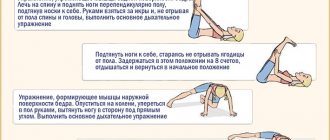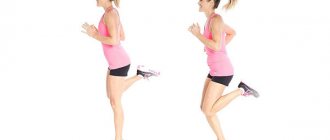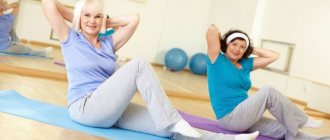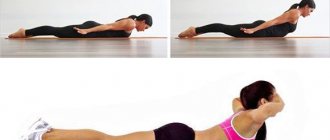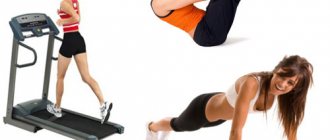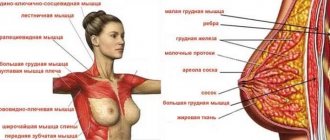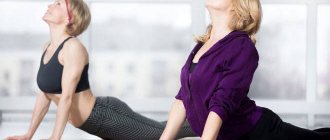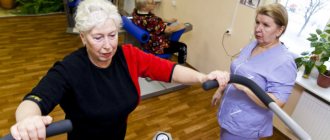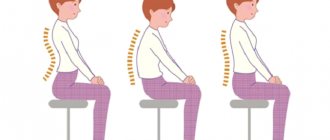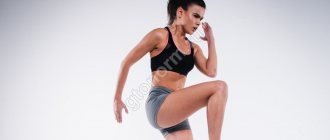It is important for parents to instill in their teenage child the desire to play sports and strengthen the body. Otherwise, it is difficult to count on the full physical development of your own child. The first step towards achieving the goal is to regularly perform special exercises for a teenager. There is a whole set of exercises that are easy to do in the morning and evening. Such actions have a beneficial effect on the development of plasticity and coordination of movements, strengthening the immune system. Exercising makes a teenager disciplined and instills a desire to play sports.
How important is training for a child?
Exercise for a teenager is of decisive importance in physical development. Children aged 12–14 years experience active body growth and changes at the mental level. Puberty occurs. During the period of hormonal transformations, it is important for boys and girls to resort to actions that help strengthen muscles and bones, and train the cardiovascular system.
Gymnastic exercises ensure the fastest adaptation of a child’s not fully formed body to changes. Regular exercise for teenagers 12 years and older makes it possible to feel less tired in the evening. Physical exercises help avoid the occurrence of stagnant processes in the body of schoolchildren who lead a predominantly sedentary lifestyle.
Where to begin?
It is wise to introduce a teenager to physical activity by going for morning or evening jogging with the whole family. A good option would be to perform aerobics and gymnastic exercises at home. Parents should set an example for their child by systematically devoting time to training. You should not stop exercising for a long time. Otherwise, long breaks will not allow the teenager’s body to get stronger. You need to start with light exercises, gradually increasing the load.
Neck warm-up
For teenage girls and boys, exercises should begin with a neck warm-up. The feet are placed shoulder-width apart. The back is held according to its natural curves. Hands are placed on the lower back. Slowly tilt your head to the right and left, back and forth. Perform rotations in a clockwise direction, and then in the opposite direction. During warm-up, try not to throw your head back too much. Otherwise, the risk of injury to the cervical vertebrae increases.
General physical training for children 12-14 years old
General physical training for children 12-14 years old
Physical training is one of the most important factors for further progress in teaching technique and tactics. The characteristics of children 12-14 years old make it possible to specifically influence the development of such qualities as speed, agility, flexibility, strength and coordination.
Approximate list of exercises for general physical training classes;
Walking
– usual at a moderate pace, on toes, on heels, raising knees high, rolling from heel to toe, left-right side from heel to toe (two legs together), on the outer and inner side of the foot, cross step, lunges, back forward and etc.
Run
along straight lines and arcs; snake (with high knees); wide, small steps with overlapping shins; cross step; jumping, slowing down and speeding up; with jumping over obstacles; jumping; with a change in direction; shuttle; raising straight legs forward; starts from various positions backwards; side step; various running combinations.
Jumping
Bouncing on your toes; on one, on two legs; jumping from foot to foot; jumping from various heights, jumping up and jumping over an obstacle; in length and height from place; with a jump rope, rotating it forward, backward, on two legs, alternately changing legs as you move forward
Exercises to develop speed and agility
All exercises are performed in pairs to maintain a competitive spirit. In running exercises, you can place a ball at the finish line, and the competition for speed and agility will take on a slightly more interesting character - the task of who can get to the ball faster.
A.
Starting position – face forward. At the first signal from the coach, students perform a fast run (“running frequency”) in place; at the second signal, they dash forward 10-15 meters to the finish line. Do 2-3 series 5-7 times, pause between series – 3-5 minutes.
B.
Starting position - turning with your left side, right side or back to the starting line. At the coach’s signal, quickly turn around to face the starting line and make a dash forward 5–15 meters. The same thing only from a sitting position facing forward, with your back, left or right side; lying in support on your hands. Each exercise is performed 3–5 times.
C.
Starting position – left or right side to the starting line. At the first signal - run in place, at the second - turn around to face forward and make a dash 10-15 meters forward to the finish line. Repeat 3-5 times.
D
.
Starting position - children stand at a distance of 50-60 centimeters, facing each other and sideways to the starting line. They start after one of the partners touches the second. The second one’s task is to catch up with the first one at a distance of 10-15 meters and “sully” him. The exercise is performed 4–8 times. Rest pause between repetitions – 1 minute. Exercises to develop strength
Exercises A–D are performed in pairs.
A
. The players stand facing each other, take each other’s hands and try to pull their partner to their half with one hand. Make from 4 to 6 attempts.
B
. Starting position – arms to the sides. One partner puts his hands on the hands of the other and prevents him from raising his hands. The goal is to lower and raise your arms with resistance. Perform 16–20 lifts and lowers.
C
. Starting position – hands on the belt. One partner places his hands on the other's shoulders and puts gentle pressure on them. The goal is to rise on your toes and lower yourself. Perform 20-25 lifts.
D.
Passes and throws of small medicine balls from various starting positions: throws with two hands to the right, two hands to the left, two hands from behind the head. The distance between partners is 6–10 meters. Each exercise is performed 8–14 times.
E.
Push ups. From 20 to 40 times.
Exercises to develop flexibility
The basis of work on developing flexibility is exercises, which, when performed, lengthen the muscles necessary for the athlete to perform any motor actions with the required amplitude. There are two types of such exercises . Dynamic exercises
– these are repeated swinging movements of the arms and legs, flexion, extension, and twisting of the body, which are performed with a large amplitude and different speeds. Examples of such exercises:
• Active free springy bends forward and to the sides with constantly increasing amplitude (15–20 times).
• Swing your left and right legs forward and backward (10–12 times).
• Starting position – feet shoulder-width apart. Bend back, first reaching your right heel with your right hand, then reaching your left heel with your left hand. Do 5-7 bends on each leg. • Starting position – place your feet as wide as possible. Make springy forward bends with your palms on the floor. Perform 10–18 times.
Static exercises
- these are various poses in which a certain muscle or group of muscles is stretched for some time. Examples of such exercises:
• Starting position – feet shoulder-width apart. Slowly lean forward, hang your arms freely and touch the floor with your palms. Bend your legs slightly at the knee joints, grab your toes with your hands, then straighten your knees. Make sure your breathing is even and calm. Hold the pose for 6-12 seconds, then return to the starting position. Repeat 3-5 times with a rest of 5-10 seconds.
• Starting position – sit on the floor, straighten one leg forward, bend the other at the knee joint, and bring the foot to the buttocks. Keep your torso straight. There is a certain stretching of the muscles already in this position, but if the level of flexibility is good, then you can complicate this exercise by tilting the upper body towards the extended leg.
Exercises to develop coordination
Acrobatic exercises
A
. Somersaults in a forward tuck. 3-4 series of 3-5 repetitions.
B
. A forward somersault combined with a 180 degree turn. 1-2 series of 3-5 repetitions.
C.
Tuck back somersault. 3-5 reps. D. Walking and various balance exercises on a balance beam: walking face forward, left and right side, part ways with the oncoming partner. The height of the log is no more than 30-40 centimeters.
Exercises to develop a sense of balance
An integral part of a person’s coordination capabilities is a sense of balance. Equilibrium can be static or dynamic . Static balance
– maintaining the pose for some time (“swallow”, stand on one leg, raised leg pressed to the knee).
Dynamic -
when the athlete leaves the pose and returns to it again.
A.
Walking on a board 10–12 centimeters wide and 4–5 centimeters high, placed on the ground.
B.
Walking on an inclined board of the same dimensions.
C.
Slow, medium and fast circling in place.
D.
Walking on bricks placed at a distance of 15–20 centimeters from each other. E. Easy run on the board with 5-6 360 degree turns
Relay races for coordination and balance
A.
Passing an obstacle course 15 meters long. Two teams are participating. A cone is placed every 5 meters from the starting line (3 cones in total). A narrow board 3-4 meters long is placed from the starting line to the first cone or a thin line is simply drawn on the ground. Two gymnastic mats are laid from the first to the second cone. At the coach’s signal, the starters run along a narrow board or line. Having reached the gymnastic mats, they do 2 somersaults forward. Between the second and third cones, participants make 1-2 360-degree turns in motion, run around the last cone and repeat all exercises in reverse order, and then pass the baton to the next participant. Not only the speed of the distance is recorded, but also the mistakes made. For example, how many times has a student lost his balance while running on a narrow board, after doing 360-degree turns, etc.
B
. The scene is the same obstacle course. The starters move along the board first with their left side (in the opposite direction - with their right side). Between the first and second cones, participants roll forward, turn 180 degrees, do another somersault, and turn 180 degrees again. Between the second and third cones, they run face forward, making 360-degree turns in motion, first over the left shoulder and then over the right, run around the last cone and return to the start line, repeating all tasks.
Hands touching toes
Feet are positioned shoulder width apart. The upper limbs hang relaxed along the body. As you exhale, tilt your body forward. Try to reach the toes of the feet with the fingers of the palms. After inhaling, slowly return to the original position. During the exercise, maintain a leisurely pace, try to avoid unnecessary swinging of the body and various kinds of jerks.
Gymnastics for teenagers
Exercise 1. Feet together, arms down. Slowly move your arms to the sides, turning your palms up, bring your shoulder blades together, straighten your back and rise on your toes and - inhale; exhale and return to the starting position.
Exercise 2. Feet together, clasp your fingers behind your back so that your hands rest on your lower back. Extending your clasped hands back, turn your palms inward, move your shoulders down as much as possible, squeeze your shoulder blades together, straighten your back, rise up and inhale on your toes; exhale and return to the starting position.
Exercise 3. Legs together. Interlace the fingers of your bent arms in front of your chest, slowly extend your arms up, turning your palms up; straightening your back and rising on your toes, stretch strongly - inhale; lowering your arms to the sides and down, take the starting position - exhale.
Exercise 4. Feet shoulder-width apart, and place your hands behind your head with your palms on the back of your head. Slowly, arching your back, extend your arms wider; move your head back - inhale; exhale and return to the starting position.
Exercise 5. Legs together. Slowly, arching your back and moving your head back, raise your outstretched arms forward and up, placing one leg back on your toes—inhale; lowering your arms to the sides and down, take the starting position - exhale.
Exercise 6. Feet shoulder-width apart; take the stick by the ends and lower it down with outstretched arms. Arching your back and moving your head back, raise the stick up - inhale; return to the starting position - exhale.
Exercise 7. Feet shoulder-width apart. Tilt left and right (palms slide along the sides of the body). Don't bend your legs. Starting position - inhale, bend the body - exhale.
Exercise 8. Feet shoulder-width apart. Take the stick by the ends and place it behind your back on your shoulder blades. Bend your torso left and right (legs remain straight). Standing straight - inhale, with the torso tilted - exhale.
Exercise 9. Feet shoulder-width apart. Raising your arms up and straightening your back, slowly lean forward - exhale; return to the starting position - inhale.
Exercise 10. Feet shoulder-width apart. Take the stick by the ends and lift it up - inhale. Slowly, with a straight back, lean forward and take the stick behind your back, pressing it to your shoulder blades - exhale; return to the starting position - inhale.
Exercise 11. Legs shoulder-width apart, feet parallel, bend your arms to your shoulders, pressing your elbows to your sides. Turn your body to the left and tilt it back, raising your arms up - exhale; return to the starting position - inhale. Keep your legs straight at all times and do not move.
Exercise 12. Legs shoulder-width apart, feet parallel; take the stick by the ends and place it behind your back, on your shoulder blades—inhale. Make turns left and right, legs remain straight, do not move them; with a turn of the body - exhale.
Exercise 13. Feet shoulder-width apart, hands on the belt. Make circular movements with your body, consistently tilting it to the left, forward, right, back. While performing this exercise, keep your body straight and do not move your legs; breathe freely, without delay.
Exercise 14. Legs together. Slowly, leaning forward, bend your back, move your arms to the sides, squeezing your shoulder blades, raise your right leg back, do a “swallow.” Without bending the supporting leg, hold in this position for 2-3 seconds; breathe freely, without delay.
Exercise 15. Legs together. Inhale. Sit on your toes, spread your knees wide, back straight, arms out to the sides - exhale. Return to the starting position - inhale.
Exercise 16. Feet together. Take the stick by the ends and lift it up - inhale. Sit on your toes, spreading your knees wide, back straight, lower the stick onto your shoulder blades - exhale; then return to the starting position - inhale.
Exercise 17. Stand with your back to the wall like this. to touch her with the back of her head and shoulder blades. heels. Spread your legs slightly, placing your feet parallel, turn your lowered arms, palms forward, and press them against the wall. Taking a breath, sit down on your toes without looking up from the wall - exhale; return to the starting position - inhale.
Three complexes of morning exercises were compiled from the above exercises.
Complex 1. Walking for 15 seconds. Exercises: 1, 2, 4, 7, 9, 15. Running in place for 15 seconds, turning into walking - 15 seconds. Repeat exercise 1.
Complex 2. Walking for 15 seconds. Exercises: 6, 12, 16, 14, 11. Jumps for 15 seconds. Walk for 15 seconds and breathing exercise 4.
Set 3: Walk for 15 seconds. Exercises: 3, 5, 8, 10, 13, 17. Walking for 15 seconds. Breathing exercise 4.
These morning exercise complexes are recommended for girls 7-15 years old and girls 16-19 years old. You should start training with complex 1, performing each exercise one or two times at a slow pace. Every three days the number of repetitions increases by one, and so on up to 8-9 times.
Morning exercises should bring vigor, good health and mood. If fatigue is noted after exercise, it means the load is high. Exercises should be continued, but between exercises take rest and reduce the number of repetitions. Classes should be conducted in a well-ventilated room, wearing a suit that does not restrict movement. Sick and weakened girls should consult a doctor before starting classes.
gymnastics, pediatrics
Squats
Classic squats are a mandatory element of exercise for teenagers 14 years old. In the starting position, the feet are shoulder-width apart. The palms rest on the pelvic area. Taking a deep breath, lower your buttocks towards the floor. The gaze is directed forward. The back is kept straight. When the knees slightly go beyond the line of the toes, they begin a smooth movement in the opposite direction. Take the initial vertical stance and repeat the exercise. During the class, do 2-3 sets of 10-15 squats.
Complex of morning exercises for children of primary school age
Nina Zhukova
Complex of morning exercises for children of primary school age
for children 7–9 years old
An approximate set of morning exercises (7-9 years old)
1. Walking in place with vigorous free arm movements for 30-60 seconds.
2. I. p. - main stance. Count 1 hand forward; on the count of 2 hands to the sides; on the count of 3, hands up, rise on your toes and stretch; count 4, lowering yourself onto your heels, arms down.
3. I. p. - stand with legs apart, hands on the belt. On the count of 1, tilt to the left; on the count of 2 return to i. P. ; on the count of 3, tilt to the right; on the count of 4 return to i. P.
4. I. p. - stand with legs apart, arms to the sides. On the count of 1, bend towards the left leg, touch the toe of the left leg with your hands; on the count of 2 return to i. P. ; count 3-4 is the same as count 1, but tilt towards the right leg.
5. I. p. - lying on the mat on your back. Rotate your legs as if you were riding a bicycle.
6. I. p. - lying on the mat on your stomach. On the count of 1-2, bend, lifting your legs and chest off the mat; on the count of 3-4 return to i. P.
7. I. p. - main stance. Jumping in place on your toes and slow walking.
The number of repetitions of each exercise is 6-12 times. Breathing is voluntary. The pace depends on the preparedness of the student.
If the conditions exist, then it is advisable to do a light jog in the air a set of (can be alternated with walking)
for 6-8 minutes.
An approximate set of morning exercises (10-13 years old)
1. Walking in place with gradual acceleration for 60 s.
2. I. p. - main stance. On the count of 1-2 hands up, placing the right leg back on the toe, inhale; on the count of 3-4 return to i. n. - exhale; For a count of 5-8, do the same, putting your left leg back. Repeat 5-8 times at a slow pace.
3. I. p. - legs apart, hands on the belt. On the count of 1-2, tilt to the right, arms up - exhale; on the count of 3-4 return to i. n. - inhale; on the count 5-8 the same as on the count 1-2, but tilted to the left. Repeat 5-8 times at a slow pace.
4. I. p. - legs apart, shoulder-width apart, hands on the belt. On count 1, squat, arms forward - exhale; on the count of 2 return to i. n. - inhale. Repeat 7-12 times at an average pace.
5. I. p. - legs apart, hands on the belt. On the count of 1, tilt to the right, touch your left toe with your right hand - exhale; on the count of 2 return to i. n. - inhale; On the count of 3-4, tilt to the left, touch your right toe with your left hand. Repeat 7-10 times at an average pace.
6. I. p. - legs apart, hands in front of the chest. On the count of 1-2, jerk back with bent arms; on a count of 3-4 with the body turned to the right, two jerks back with straight arms; on the count of 5-8, do the same in the other direction. Repeat 5-8 times at an average pace. Breathing is voluntary.
7. I. p. - lying position. On the count of 1-2, bend the legs; on the count of 3-4 return to i. n. Repeat 6-10 times at an average pace. Breathing is voluntary.
8. I. p. - hands on the belt. Jumping in place. Perform 30-40 jumps. Breathing is voluntary.
9. Walk in place for 60 seconds with gradual slowdown.
An approximate set of morning exercises (14-15 years old)
1. Walking in place with acceleration for 60 s.
2. I. p. - legs apart, hands to shoulders. On the. count 1-2 hands up - to the sides, bend - inhale; on the count of 3-4 return to i. p. - exhale. Repeat 7-8 times at a slow pace.
3. I. p. - main stance. On the count of 1 arms to the sides, swing your right leg to the side - inhale; on the count of 2 return to i. n. - exhale; on the count of 3-4, do the same with your left foot. Repeat 7-10 times at an average pace.
4. I. p. - main stance. On the count of 1-3, three springy squats with your hands touching the floor - exhale; on the count of 4 return to i. n. - inhale. Repeat 9-10 times at a fast pace.
5. I. p. - feet shoulder-width apart. On the count of 1, tilt to the right, right arm down, bend the left – exhale; on the count of 2 return to i. n. - inhale; on the count of 3-4, tilt to the left, left hand down, bend the right hand - exhale. Repeat 9-10 times at an average pace.
6. I. p. - main stance. On the count of 1, arms up, right leg back on the toe - inhale; count 2 hands forward, swing your right leg forward, touch your toes with your hands - exhale; on the count of 3, arms up, swing your right leg back - inhale; on the count of 4 return to i. n. - exhale; count 5-8 tf with the other foot. Repeat 9-10 times at a fast pace.
7. I. p. - legs apart. On the count of 1-3, three springy bends forward, touch the floor with your hands - exhale; on the count of 4 return to i. n. - inhale. Repeat 7-8 times at a fast pace.
8. I. p. - lying position. On the count of 1-2, bend your arms; on the count of 3-4, their extension. Repeat 7-10 times. Breathing is voluntary.
9. I. p. - legs apart, hands on the belt. On the count of 1, jump your feet together; on the count of 2, jump your legs apart. Perform 25-35 jumps. Breathing is voluntary.
10. Walk in place for 60 seconds with gradual slowdown.
Legs forward lunges
In a vertical stance, a slight bend in the lower back is created. Place your palms together at chest level, bending your elbows. After inhaling, bring one foot far in front of you, resting it on the floor. The knee should be at the level of the toe. The hind leg plays the role of support. Return to the starting position. Repeat the exercise with alternating lower limbs. Similar to squats, the exercise helps to place feasible loads on the legs and buttocks.
Fun exercise for kids
And it's really fun! Many children really enjoy doing it. And in addition to a good mood, such exercises are useful for children, as they develop speech, coordination of movements, help memorize poetry, which in turn trains memory, and introduces them to various concepts. With the help of such exercises it is good to diversify activities with children. Choose any figurative verse on a topic that interests you and your child, and fantasize, come up with movements. First, read a poem to your child and accompany the words with actions. Do everything in a fun, emotional way. After some time, the baby will begin to repeat after you, and then do not forget to praise him. Don’t be annoyed with your child if things don’t work out. Praise him often and exercise only when the baby is healthy. Good luck to you!
1. We clap our hands - Clap-clap-clap, We stomp our feet - Top-top-top, We all raised our hands And lowered them together. And everyone boarded the magic plane. (arms bent at the elbows, in front of the chest) Started the engine - Zh-zh-zh, zh-zh-zh-zh-zh-zh (we spin our hands slowly in front of the chest, increasing the pace) The plane is flying, and the engine is humming - Ooh -u, oo-oo (arms to the sides, alternate tilts to the left and right), Let's fly... (usually after making a couple of circles around the room, we fly to eat or wash, and sometimes we “fly up” to the map hanging on the wall to geography games)
2. Clap! Once again, once again We will clap now. And then quickly, quickly, clap, clap more cheerfully! Thumb to toe, knock and knock, Clap, clap, clap! Thumb to toe, tap and tap, stomp, stomp, stomp!
3. We walk along the path. Top-top, feet, top! And we clap our hands. Clap-clap, hands, clap! Hey kids! Hey guys!
4. Hands to the sides, in a fist, unclench and on the side. Left up! Right up! To the sides, crosswise, to the sides, down. Knock-knock, knock-knock-knock! (knock fist on fist) Let's make a big circle. (“drew” a circle with your hands)
5. We stomp our feet, stomp-stomp-stomp! We clap our hands, Clap-clap-clap! We shake our heads, And we turn our heads. We raise our hands, We lower our hands, We give our hands And we run around.
6. Hey! Jumped on the spot. (jumping) Eh! We wave our hands together. (scissors movement with hands) Ehe-he! Bend the backs (lean forward, hands on the belt, bend the back) Look at the pictures. (bending over and raising your head as high as possible) Hey-hey! Bent down lower. (deep bend forward, hands on the waist) Bend closer to the floor. (touch the floor with your hands) Uh-uh! What a lazy person you are! (straighten up, shake your finger at each other) Stretch, but don’t yawn! (stretch your arms up, rising on your toes) Turn around in place deftly. (spin around) We need skill in this. What did you like, my friend? (stopped, arms to the sides, raised shoulders) Tomorrow there will be a lesson again! (hands on the belt, turned the torso to the right, right arm to the side, then to the left and left arm to the side)
7. Now all the children should stand up, slowly raise their hands, clench their fingers, then unclench their fingers, put their hands down and stand like that. We all rested a little (lean forward and shake our arms) and went on the path. (steps in place or in a circle)
8. Show all your palms (raise your hands above your head, rotate your hands, “flashlights”) And clap a little Clap-clap-clap, Clap-clap-clap. Now look at me (make any movement) You will repeat everything exactly. One-two-three, one-two-three. Now let’s show our legs and stomp a little. Top-top-top, Top-top-top. Show me your arms, legs, play with them a little (voluntary movements with your arms and legs) One-two-three, one-two-three.
9. There is a lock on the door. (hands clasped in a lock) Who could open it? (trying to separate the hands) They turned it, twisted it, knocked and opened it.
10. We have a nice posture, We have brought our shoulder blades together. We walk on our toes and then on our heels. Let's go softly, like little foxes, Well, if you get tired. Then let's all go clubbing, like bears go into the forest.
11. We sat on the carousel. (mother and baby stand opposite each other, holding hands, and walk in circles) The carousel is spinning, The carousel is spinning. We sat on the swing, we flew up, (we stood up and stretched up) we flew down, (squatted down) we flew up, we flew down, and now you and I together (we pretend to be sailing on a boat) We are sailing on a boat. The wind is blowing across the sea, (we wave our arms outstretched) Our boat is rocking. (hands on waist, sway your whole body)
12. The planes began to hum, (rotation in front of the chest with arms bent at the elbows) The planes flew. (arms to the sides, alternate tilts to the left and right) They sat quietly in the clearing, (sit down, hands to knees) And they flew again. (arms to the sides, “flying” in a circle) Oooh-ooh-ooh-ooh...
13. Tiki-tock, tiki-tock, (knock on the sides with outstretched arms) This is how the clock knocks. Knock-tock, knock-tock, (hands in front of you, fists clenched, “bicycle”) So the wheels are knocking. Toki-tok, toki-tok, (hands clenched into fists, knocking one on the other) This is how a hammer knocks. Knock-knock, knuckle-knock, (we stomp on the floor) That’s how the heel clicks.
14. The rhythm gradually accelerates. Mill, mill grinds flour. (we twist the “mill” with our hands) The wind blows - the wind blows stronger. (smoothly wave your arms above your head from side to side) The mill grinds the flour faster. It blows - the wind blows stronger. The mill grinds flour even faster. It blows - the wind blows stronger. We ground flour (we knock fist on fist) Huge bags. (we depict “big bags”) From flour, from flour (clap our palms upside down, depicting pies) We baked pies, Ladushki-okay, (clap) We baked pancakes.
15. We knock on the floor with our fists, imitating drops, or walk and stomp to the beat of the drops. Quiet, quiet rain, drip, drip, drip. Heavier, heavier rain, drip-drip-drip, strong, heavy rain, drip-drip-drip! Thunder! Thunder! (clap) Lightning flashes in the sky! (hands up)
16. Here is a clearing, and around (with a wide gesture, spread your arms to the sides) Linden trees are lined up in a circle. (clasp rounded hands above your head) The crowns of the linden trees make noise, (arms at the top, swing them from side to side) The winds hum in their foliage (lean forward) bend the tops down, (lean forward, swing your body from side to side) And swing them, download. After the rain and thunderstorms (straighten up, raise your arms) The linden trees shed streams of tears. (smoothly lower your hands, moving your fingers) A tear drops from each leaf (hands down, shake vigorously with your hands) Must be thrown onto the paths. Drip and drip, drip and drip - (clap your hands) Drip, drip, drip - drip! How weak the leaf is! (“drop” your hands) He will wash himself with the rain, (stroke first one, then the other hand) He will grow stronger every day. (clench fists)
17. A white cloud (rounded hands in front of you, fingers locked) Rising above the roof. (without releasing your arms, raise them above your head) A cloud rushed (straighten your arms) Higher, higher, higher. (stretch your arms up) The wind is a cloud (smooth swaying of your arms above your head from side to side) Hooked on a steep slope. (clasp your hands with your fingertips above your head) The cloud has turned (use your hands to describe a large circle downwards from the sides) into a rain cloud. (sit down)
18. White snowflakes spun, spun (spin in place). Light fluffs flew up in a white flock (raise your hands). (spin on your toes) The evil blizzard has calmed down a little - (lower your arms, stand up straight) They settled down everywhere. (sit down, hands to the floor) They sparkled like pearls, (stand up, hands forward) Everyone marvels at the miracle. (spread your arms to the sides) Sparkle, sparkle (use your hands to perform the “scissors” movement) White girlfriends. They hurried for a walk (steps in place) Children and old women.
19. We depict the size of the cabbage with our hands, then show how we cut, salt, three and mash the cabbage. We have cabbage, Big cabbage. We cut the cabbage, cut it, We salt the cabbage, salt it, We three, three the cabbage, We mash the cabbage, mash it.
20. Chok-chok, heel! (stomp your feet) The cricket spins in a dance. (spin around) And the grasshopper without a mistake (moves his hands, as when playing the violin) Performs a waltz on the violin. The butterfly's wings flicker. (we wave our arms like wings) She flutters with the ant. (spin while jumping) Squats in a curtsey (do a curtsy) And again spins in the dance. (spin around) To the cheerful hopak (dance movements, as in the hopak) The spider dances dashingly. Hands clap loudly! (clap your hands) That's it! Our legs are tired! (sit or lean forward, hang your arms down)
Article provided by the site "Early Child Development"
